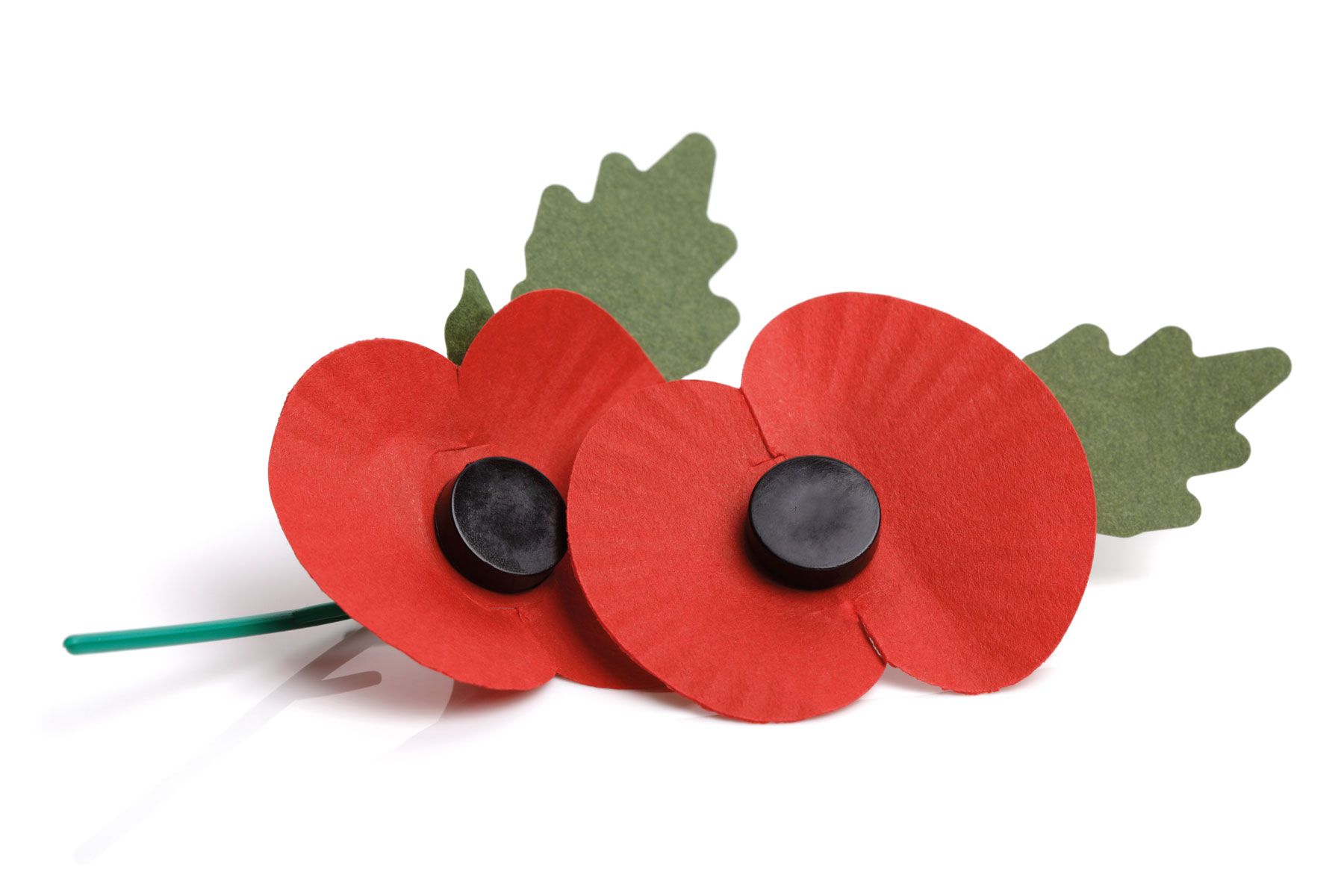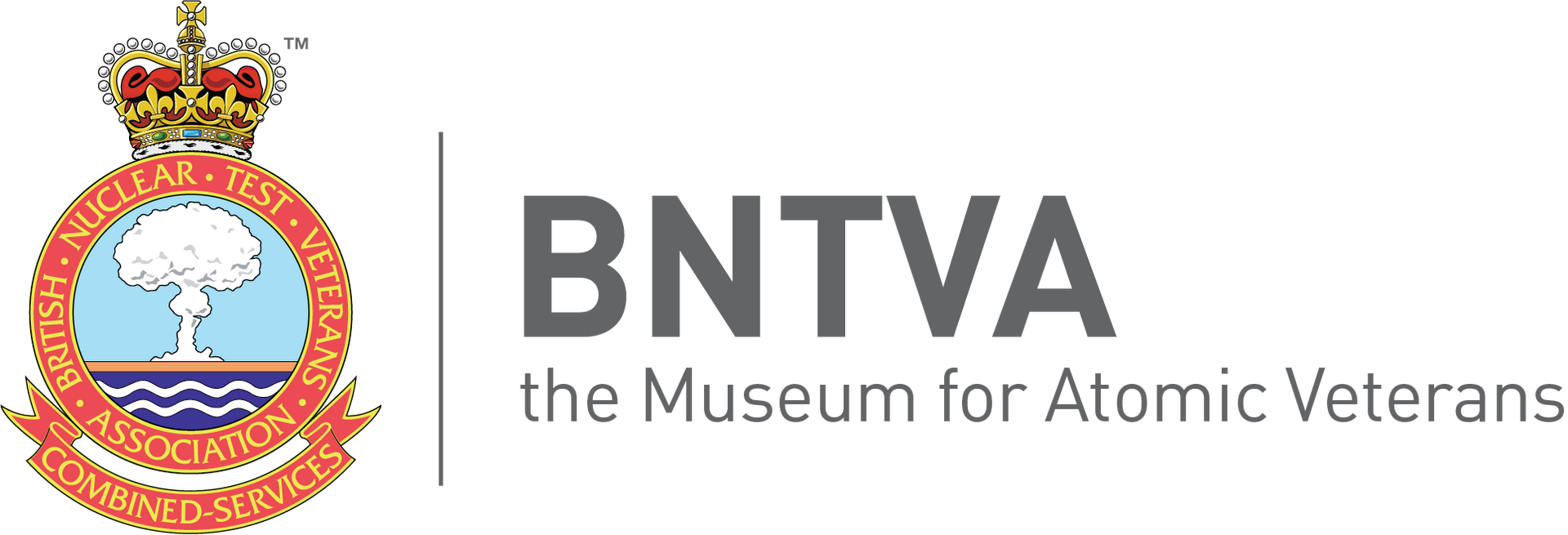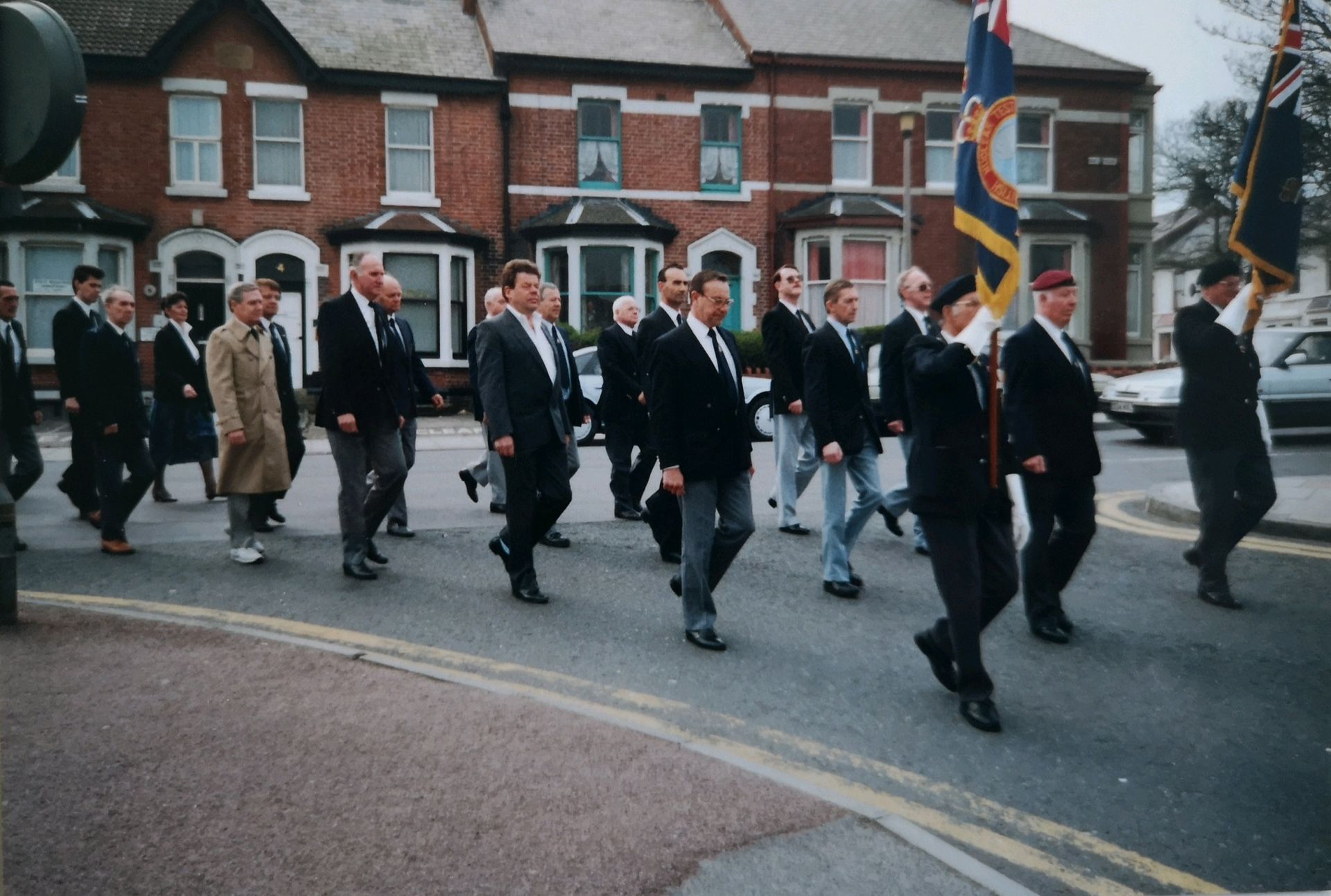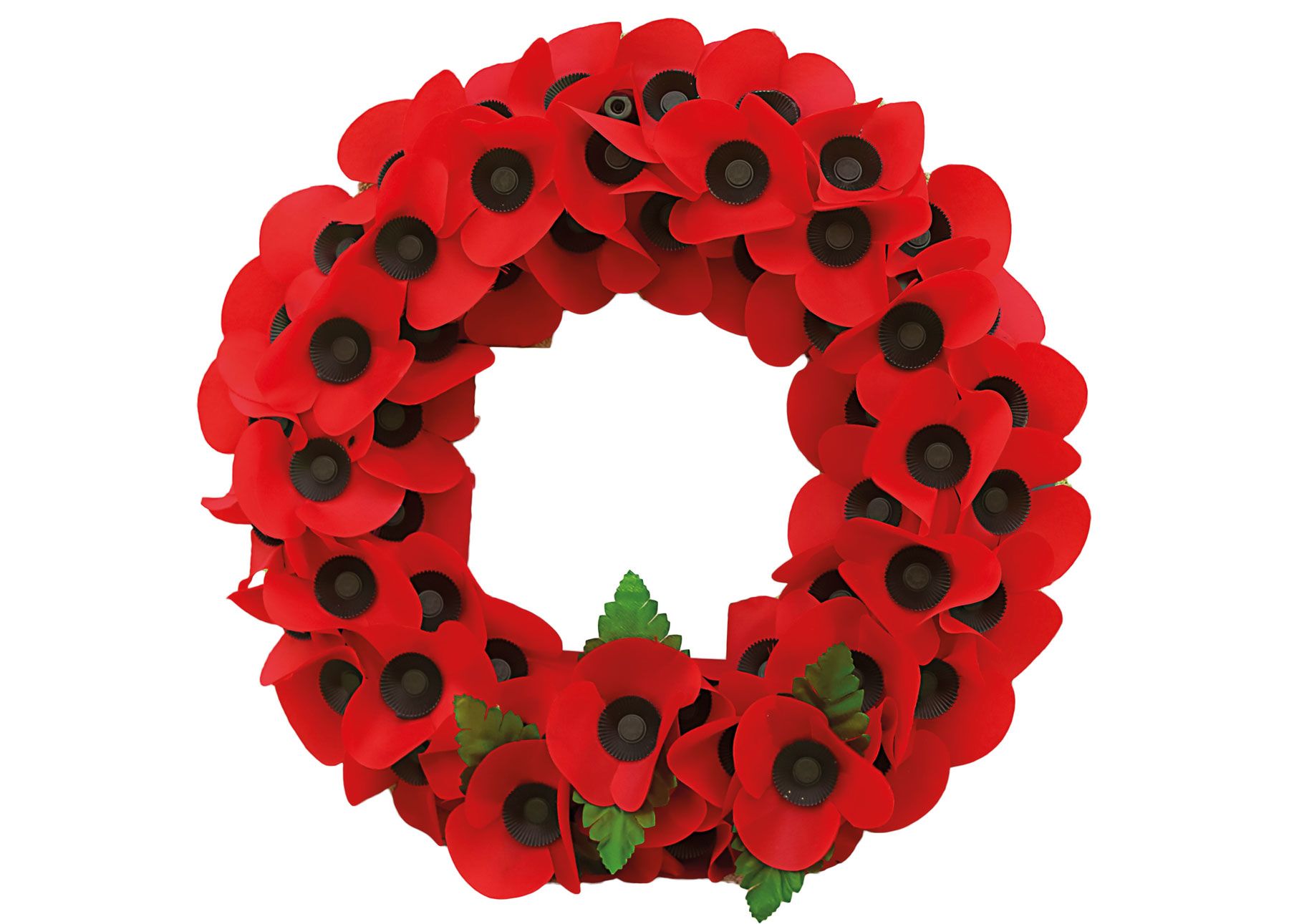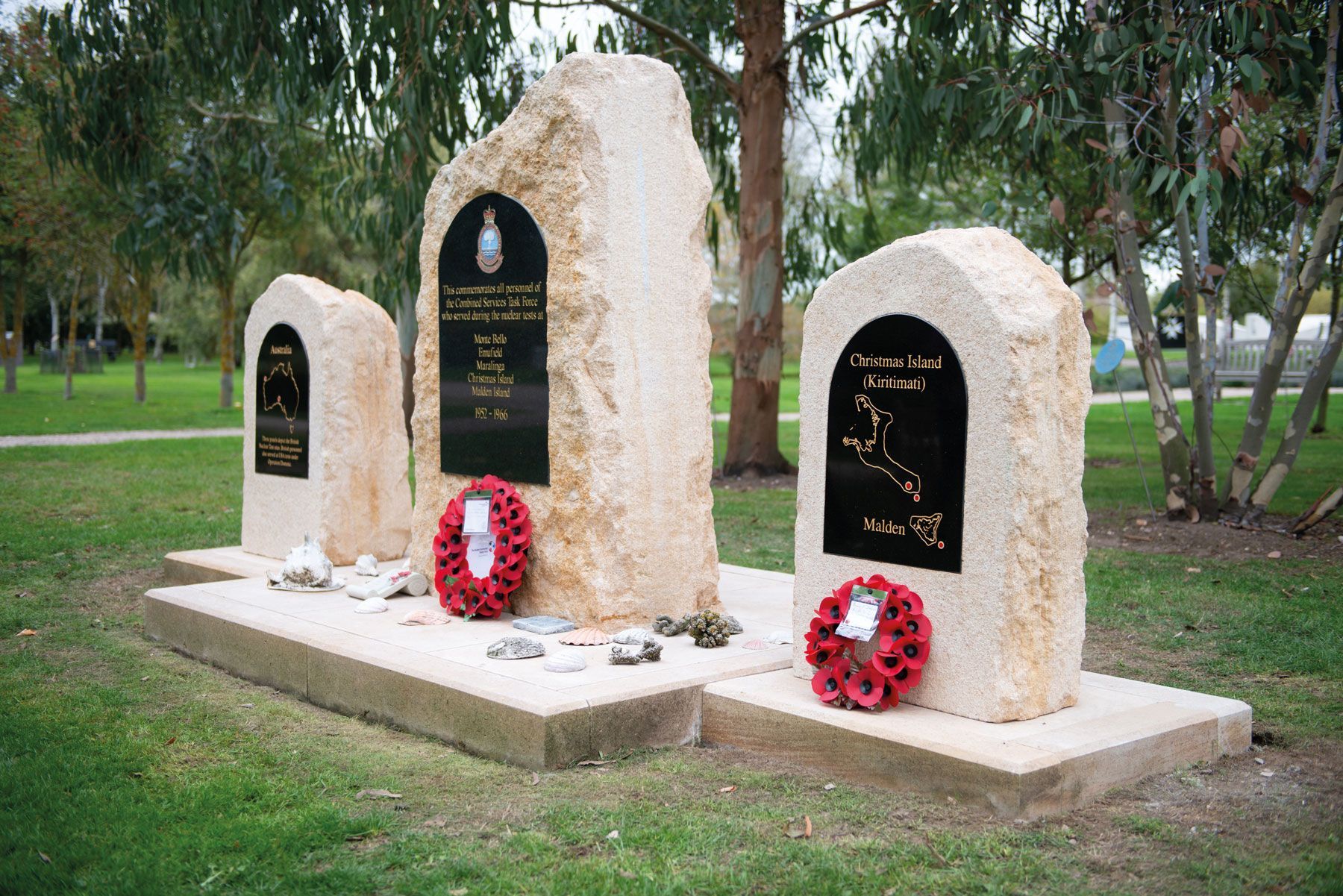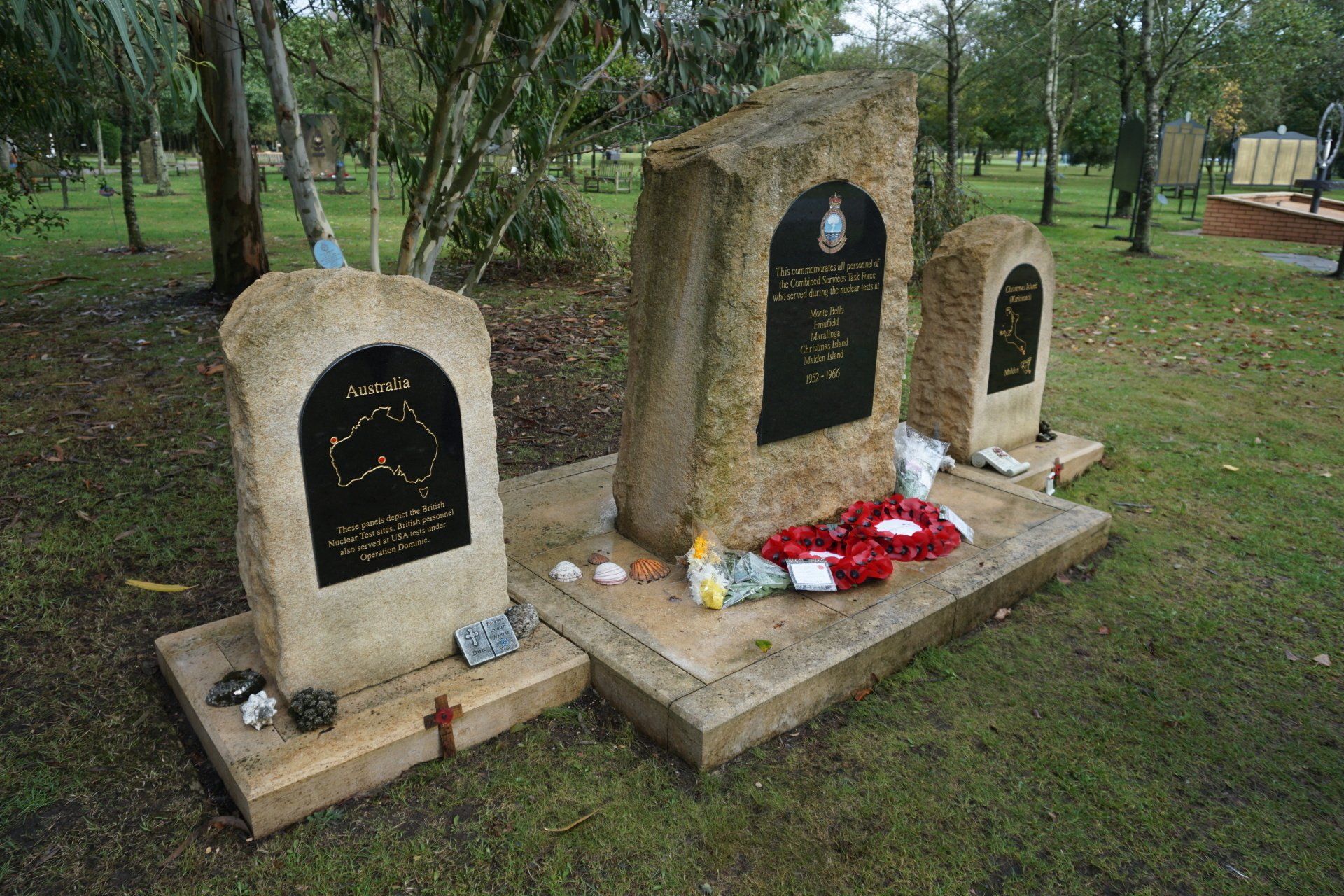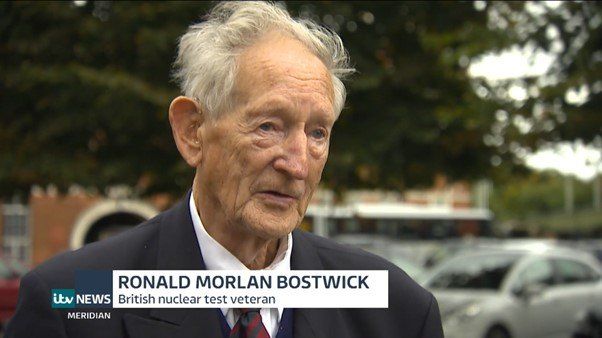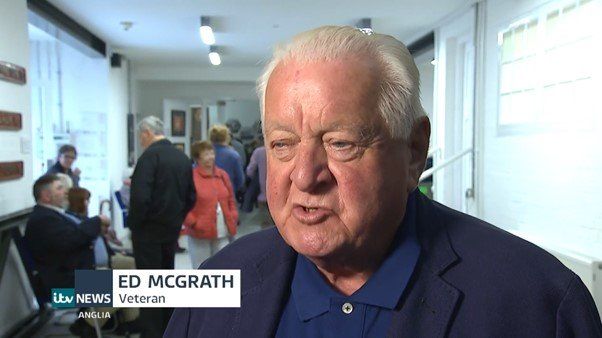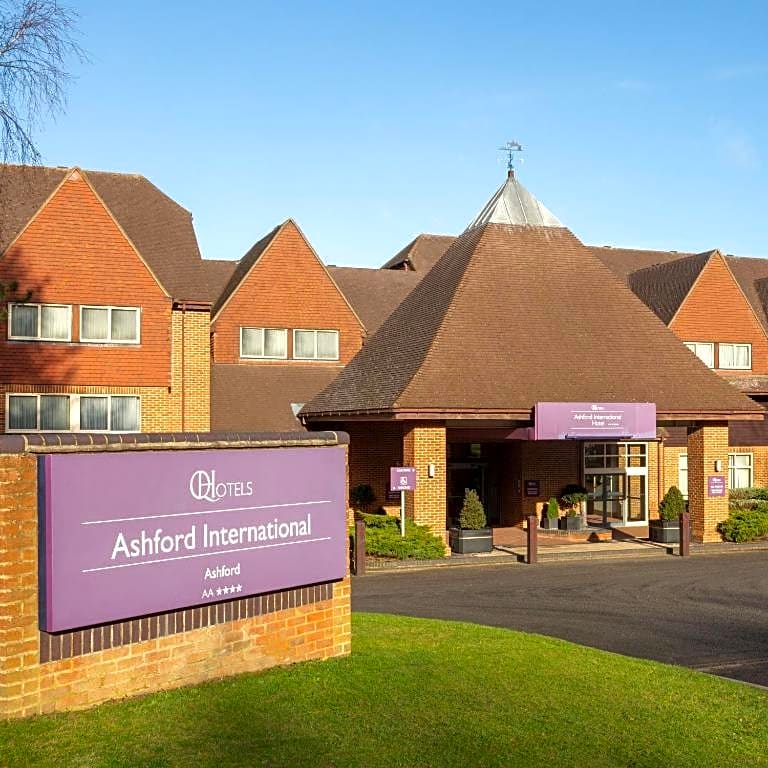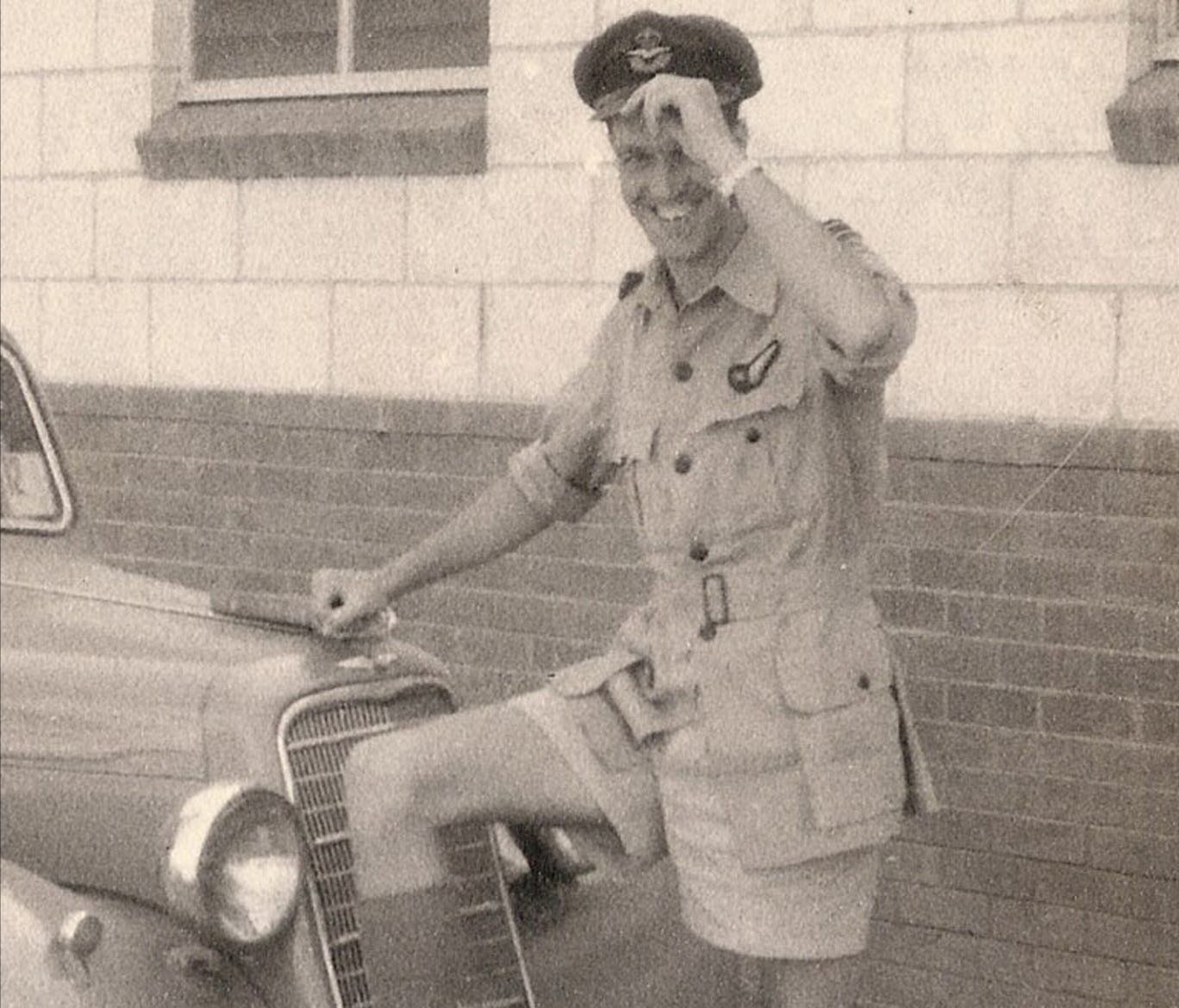The Medieval Dragon has Breathed across the Surface of the Earth - Operation Grapple Z
Operation Grapple Z - the race for a new nuclear deterrent
Even before Britain’s biggest hydrogen bomb detonation at Operation Grapple Y off Christmas Island on 28 April 1958, planning had been made for a series of four Grapple Z tests to follow shortly after, with work beginning in 1957. The Ministry of Defence and government scientists at Aldermaston were interested in refining the hydrogen bomb and making use of limited time to test the nuclear bombs before the Test Ban Treaty came into operation in 1963. It had been anticipated that the Test Ban Treaty could come into force as early as September 1958, however, the other reason for speed was to be ready for the 1958 US-UK Mutual Defence Agreement. President Eisenhower agreed that the United States would halt nuclear testing for a year if the Soviet Union and the UK would do so too. Test ban negotiations commenced in Geneva on 31 October 1958. All three powers held nuclear tests in September and October 1958.
Grapple Z realised Britain’s final experiments with the hydrogen bomb and took the form of two Valiant air drops off Christmas Island and two balloon tests on the Island itself:
22 August Grapple Z.1 Pendant – balloon - 24kt
The device was raised 1,500 feet into the air. 10 minutes before detonation time the men were told to turn their backs away from the balloon; at minus 40 seconds they were told to close eyes and cover them with their hands. Almost immediately after the blast, the plume spread to 1,300 ft in diameter. Two Canberra aircraft collected samples from the cloud at 18 and 30 minutes after detonation, and both aircraft received a great deal of contamination. On reflection after examining the fallout, the physicist EP Hicks stated that ground zero should have been staged at the south-west of Christmas Island, so fallout went seawards rather than landwards. Having said this, Burgee was detonated at the exact same point as Pendant.
2 September Z.2 Flagpole – air drop Valiant XD822 – 1.21mt
After the scientists considered hypothetical incidents, Flagpole was detonated at 9,440 feet; the fireball stretched to 8,500 feet. Three electric Canberra B-6 bombers sampled the radioactive cloud, with the final crew spending 11 minutes within the cloud at 53,700 feet. This particular Canberra had experienced an unknown instrument failure which was fixed before Burgee and the crew received a gamma radiation dose of above 100 milliSieverts.
Joe Pasquini, cloud sampler, flew in this Canberra, and in a document, Flagpole 1, which he produced for the BNTVA, Joe stated, “I was to fly as the observer; the ‘guinea pig’ crew member. Cloud Sampling only required a two-man crew. But the Ministry of Defence insisted that full bomber crews were needed to fly the sampling missions. As a result, during all the nuclear tests, more than 400 Observers were unnecessarily exposed to high energy ionizing radiation. These would be the ‘guinea pigs’ needed to monitor short term and long-term effects of radiation on the human body. The purpose being to see if in the event of a nuclear war, a bomber crew irradiated with high intensity gamma radiation, would be fit enough to fly on more than one nuclear mission.
Climbing up to our predetermined height, and position, we started flying our holding pattern on a racecourse circuit. Listening in for the final bombing run, and bomb release, we quickly turned away to put as much distance between us and the detonating cauldron of nuclear magma. After the flash subsided, we flew back to our holding station, fifty miles away from Ground Zero, and continued flying the racecourse pattern. Until we were called in by Sniff Boss to make the first deep penetration of the mushroom cloud. We listened on the secret operational radio frequency, as Sniff Boss made two narrow cuts through the cloud and were very intent on hearing the radiation readings that they broadcast during their passage through the cloud.
This would provide us with a reference point to what we could expect, when we flew into the Zulu Flagpole cloud. The radiation readings Sniff Boss broadcast were on the high side, but there was still 10 minutes before we would be called in to enter the cloud. The Observer did not have a window, except for the skylight, it was impossible to see what was happening outside the aircraft.
We were ordered in to make the first pass, and the aircraft straightened up for a deep penetration into the cloud. With the Observers ejection seat being on the right-hand side of the aircraft, my right elbow was only 3 inches away from the skin of the aircraft. On the intercom radio we used for internal communications, the Pilot called out “Here we go"! The black sky in the sky light window above my head, changed to white, as we penetrated the centre of the cloud. Right at that very moment………….. My right elbow ‘exploded’! The pain was excruciating. The pain shot up my arm, across my body, up to my head and down to my feet. I was paralyzed and was unable to move for almost two minutes. Two events had happened simultaneously.
We entered the nuclear cloud; the radiation instruments went crazy – at the very same time my right elbow exploded. It could only have been the shock of high energy ionizing radiation, which had triggered an unbelievable attack of the ‘bends’. Attempting to describe what had happened, and documenting it during de-briefing, was impossible. No one was interested, they just did not want to know. They had their own personal stories to tell and were not interested in listening to anyone else’s.”
11 September Z.3 Halliard – air drop Valiant ZD827 – 800kt
Halliard arrived in three parts to Christmas Island for the weapons’ assembly team to construct inside a Blue Danube weapon casing, which had been used previously at Operation Buffalo Kite, Maralinga, Australia in 1956, albeit this time with thermonuclear components. Its yield was predicted as 0.75 megaton, the device was dropped at 46,000 feet, with the fireball reaching 8,000 feet in diameter. On this occasion, four Canberra's were used for cloud sampling, with one Canberra sniffer aircraft remaining in the cloud for 12 minutes, piloted by Christopher Donne. Nic McLellan reports in his book, Grappling with the Bomb, that Christopher Donne had entered a “cut” in the cloud as the Canberra rose. His navigator panicked and expressed his opinion to abandon the cloud, but they were unable to leave due to the turbulence, and with the instruments resting against their maximum stops. On landing, the crew were decontaminated and Donne was told to return to the UK due to receiving an excessive level of radiation. He searched for data over his next decades through Freedom of Information requests, regarding the exposure his crew had encountered, but was unsuccessful in his endeavours.
23 September Z.4 Burgee – balloon – 25kt.
Burgee used a tritium gas generator, called Daffodil. Four balloons were linked and hoisted to the correct height and with final assembly of the weapon. 500 observers witnessed the test, wearing normal clothing, rather than protective clothing. 28 minutes before detonation, the Daffodil generator started to produce tritium gas, then at zero minutes a flash occurred followed by a momentary heat pulse and a yellow glare witnessed through closed eyes. At this point, the tannoy commanded all to turn to witness the fireball rising into the air.
William RJ Cook took up the position of Deputy Head of the Weapons Group of the United Kingdom Atomic Energy Authority (UKAEA), and Britain developed the hydrogen bomb under his leadership. Lorna Arnold states in her book, Britain and the H Bomb, that, “Cook had defined the essential purpose of Grapple Z as early as October 1957, in a paper on megaton warhead development. It was to produce the promised 1-ton, 1-megaton warhead, which also had to be 'immune' - invulnerable to radiation damage, or the so-called RI effect.”
A major problem in this Cold War era of fast-paced scientific development was that Britain and the Commonwealth’s bombs could potentially be disabled caused by a prior detonation by the Soviets due to their plutonium core. A prior detonation could render the bombs useless by enemy action using nuclear fission, as neutron or x-ray penetration of a warhead may reduce yield, disrupt fissile components, impede the weapon’s electronic systems, and prevent detonation. At this time, the Russians had already developed an immune ballistic missile warhead, whereas the British had not, and, despite testing since 1952, the Commonwealth bombs had lost their value as a suitable nuclear deterrent due to this development.
The scientists at Aldermaston were busy building a large ballistic missile with a range of around 1,500-2,000 nautical miles – the de Havilland Propellers Blue Streak - which was later fired from the Woomera rocket range in South Australia in 1964, yet never entered full production. The scientists were working on ballistic missile rockets as the new nuclear deterrent which could withstand a 1 megaton blast due to their underground launchers. These missiles were designed to ultimately replace the V-bombers (Valiant, Victor and Vulcan) by 1965, however, this did not happen.
A strictly secret project, “R”, was created to analyse processes involved in designing high-yield fission boosted warheads. The question was, how could this be realised? Lorna Arnold states that the science behind this was “used to reduce the size and fissile content of a warhead while maintaining or even improving the yield”. In essence, the bombs became lighter, not heavier, and this ticked boxes due to the economic implications for the Commonwealth. External neutron initiators were used, to kickstart the core's chain reaction; these had previously been tested on Orange Herald. Cook was not keen on using gaseous tritium or layers of thermonuclear material to trigger the reaction, yet these methods and components were tested successfully at Grapple Z in both balloon bursts.
The balloon burst method had been tested at Operation Antler, Taranaki, on 9 October 1957, so the decision was made to detonate a boosted fission bomb at Grapple Z in a similar way. Balloon crews arrived at Christmas Island after training at RAF Cardington in early 1958. The crews included health and safety personnel and men to decontaminate equipment; their camp was set up close to ground zero.
Following my desire to gain a three-dimensional approach to Grapple Z, I watched a series of seven Imperial War Museum films of Grapple Z, linked at GRAPPLE 'Z' [Main Title] | Imperial War Museums (iwm.org.uk) IWM AWE 1. The films were written and narrated by Barrie Pitt and show arrivals of the main players, such as Noah Pearce from Aldermaston and Roy Pilgrim, Scientific Director for Grapple Y and Z. Barrie saw active service in WW2, became a sergeant post-war in 21 SAS prior to becoming Information Officer at the Atomic Energy Authority at Aldermaston, the hub of British nuclear testing. His role was to turn scientific information into readable prose, and the commentary for this series of films was created by him.
The first film begins with “Official Secrets Act” on the screen, and then Barrie sets the scene of life on Christmas Island for the Islanders and the servicemen. He peppers in touches, above mood inducing music, such as relating that the Gilbertese Islander children’s swings were made by the Royal Engineers’. Within his in-depth commentary over such a visual platform of film, he describes the setting of the scene for the balloon testing in a powerful way, “And now during the night the balloons go up, silver against the midnight sky, the weapon neatly cased below; It is D Day.”
After the detonation of Halliard, the camera focuses on the wrecked accommodation tents of the balloon unit from RAF Hunstanton, caused by the shockwave that ripped through. Pitt’s descriptive words can be spine-chilling, “Checks have been made… the sand’s run out…”, then after detonation, “As if some medieval dragon had breathed across the surface of the earth.”
There is a lot to learn from the official films made for the Commonwealth testing, including the use of language from the time and how the Ministry had wanted to portray the nuclear testing. Within the prose is the official line of men working, and it is clear that a number of men were given roles that they would not have performed on a daily basis outside of the tests.
Of particular importance is the narrative around “Captain Freddie Flit”, who flew the converted Auster crop sprayer daily throughout the Grapple and Dominic test series to shower parts of Christmas Island with dichlorodiphenyltrichloroethane (DDT). Pitt states, “There are two Austers on the Island, and if it weren’t for their unending toil, the health and comfort of Task Force Grapple might not be by many means as high a standard as it is. This little plane is the Medical Officer’s first line of defence against sickness. Now she carries a fuselage tank full of DDT dissolved in liquid paraffin, and from nozzles beneath her wings, the insecticide is sprayed over the habitable areas of the Island. 5000 gallons of the fluid is pumped out every week and in keeping down the flies alone in saving time and temper affected is incalculable. Other means used to keep down the spread of sickness include the continual spraying of shallow lagoons where mosquitoes can breed. The native Gilbertese help here under direction of service personnel. Out of this swing fog machine comes DDT powder into the shrubs and vegetation dumps, especially around the kitchen areas, smoking out nests of flies, bees and dragonflies.”
This constant spraying of DDT on the men and close to food, shown in film footage of the time, to alleviate insect problems has to be weighed up in the long-term, knowing what we now know regarding the topic of carcinogenic pesticides. Sadly, we are learning the negative health implications caused by DDT, which is a topic focused on in the new BNTVA medal application to the Advisory Military Sub-Committee. This will be the subject of a later blog to consider the further epigenetic effects of DDT through the family line by its interruption with histone retention site alterations, through the lens of the Commonwealth and US testing at Christmas Island between 1957-1962.
